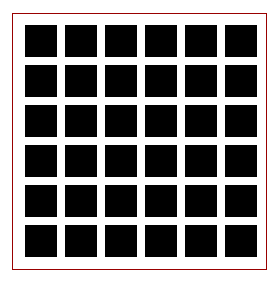Out of Body: Sensory Manipulation and the Experience of "Self"

In research that was just reported in latest issue of the journal, Science, two different teams of researchers at European universities have manipulated the visual and tactile sensory systems of study participants to induce the illusion that these persons were "out of their bodies". As Sandra Blakeslee reports in the New York Times (August 24, 2007):
The longer of the two studies (Lennenhager et al., 2007) offers this abstracted description of their findings:Using virtual-reality goggles, a camera and a stick, scientists have induced out-of-body experiences — the sensation of drifting outside of one’s own body — in ordinary, healthy people, according to studies being published today in the journal Science. When people gazed at an illusory image of themselves through the goggles and were prodded in just the right way with the stick, they felt as if they had left their bodies. The research reveals that “the sense of having a body, of being in a bodily self,” is actually constructed from multiple sensory streams, said one expert on body and mind, Dr. Matthew M. Botvinick, an assistant professor of neuroscience at Princeton University. Usually these sensory streams, which include vision, touch, balance and the sense of where one’s body is positioned in space, work together seamlessly, Dr. Botvinick said. But when the information coming from the sensory sources does not match up, the sense of being embodied as a whole comes apart. The brain, which abhors ambiguity, then forces a decision that can, as the new experiments show, involve the sense of being in a different body.
These results raise provocative questions about what it means to be a "self" and may actually move clinical researchers more deeply into an examination of neuroperceptual mechanisms in disorders such as schizophrenia. At the recent APA meeting in San Francisco, I heard a fascinating (and very difficult) paper by Louis Sass, Ph.D. of Rutgers (NJ) who presented a phenomenological model of schizophrenia, one which is rooted in defective processing of perceptual experience by the individual.Humans normally experience the conscious self as localized within their bodily borders. This spatial unity may break down in certain neurological conditions such as out-of-body experiences, leading to a striking disturbance of bodily self-consciousness. On the basis of these clinical data, we designed an experiment that uses conflicting visual-somatosensory input in virtual reality to disrupt the spatial unity between the self and the body. We found that during multisensory conflict, participants felt as if a virtual body seen in front of them was their own body and mislocalized themselves toward the virtual body, to a position outside their bodily borders. Our results indicate that spatial unity and bodily self-consciousness can be studied experimentally and are based on multisensory and cognitive processing of bodily information.
Target Articles: (A) Ehrsson, H. H. (2007, August 24). The experimental induction of out-of-body experiences. Science, 317(5841), 1048. (B) Lenggenhager, B., Tadi, T., Metzinger, T, & Blanke, O. (2007, August 24). Video ergo sum: Manipulating bodily self-consciousness. Science, 317(5841), 1096-1099.
Newspaper Report: Blakeslee, S. (2007, August 24). Studies report inducing out-of-body experience. New York Times (Online).
Other Citations: Sass, L. A., & Parnas, J. (2001). Phenomenology of self-disturbances in schizophrenia: Some research findings and directions. Philosophy, Psychiatry, & Psychology, 8(4), 347-356. [LMC Access]
Sass, L. A., & Parnas, J. (2003). Schizophrenia, consciousness, and the self. Schizophrenia Bulletin, 29(3), 427-444. [Abstract]